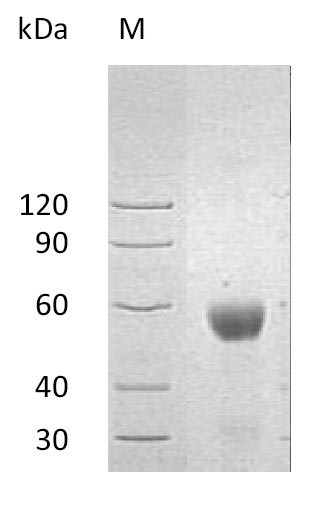Discover the power of Recombinant Human ULBP2, a high-quality protein engineered for immunology research applications. This partial-length protein encompasses the 26-217aa expression region of UL16-binding protein 2, a crucial component in the immune system's intricate network. Produced in mammalian cells and featuring a C-terminal Fc-tag for simplified purification, Recombinant Human ULBP2 is perfect for researchers seeking a dependable source of ULBP2 protein.
Our Recombinant Human ULBP2 exhibits a purity of greater than 90% as verified by SDS-PAGE, ensuring the protein will deliver optimal performance in your experiments. Furthermore, the endotoxin levels are less than 1.0 EU/µg as determined by the LAL method, guaranteeing minimal interference with your work. The activity of this protein has been assessed by its ability to bind Human ULBP-2 in functional ELISA, with an ED50 of less than 30 µg/ml, demonstrating a high level of biological activity.
Supplied as a lyophilized powder, Recombinant Human ULBP2 offers convenient storage and use for a variety of experimental setups. Choose this protein for a reliable and effective solution for your research needs.






